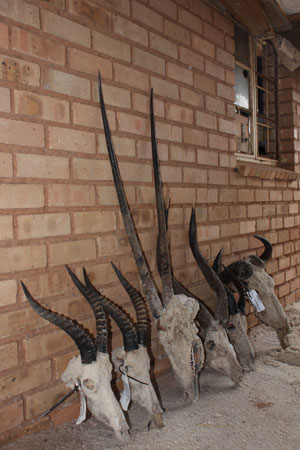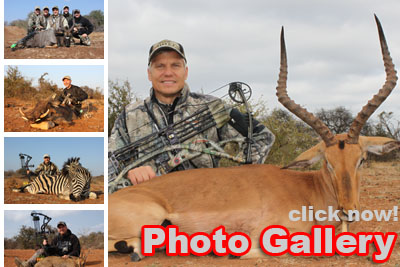Making Flight Arrangements
Our party opted to use a travel agent familiar with travel to Africa. We originated from different airports but connected through Atlanta and needed to arrive in Johannesburg at the same time to meet our outfitter. Our agent coordinated the connections and made it very convenient for us. Two people did online airfare research via the discount ticket providers but did not find a significant savings compared to the full-service travel agent. In addition, I opted for travel insurance that cost an extra $120.
Get Your Shots
I’d heard that there were a few disease-prevention shots required, so I visited my general practitioner to learn about shots. Based on the recommendation he found online from the U.S. Center for Disease Control, he administered a few of the vaccinations. Later, I discovered a travel clinic tailored specifically for international travelers. Turns out that the recommendation I received from the travel clinic (right or wrong) was more comprehensive than what my general practitioner provided. In the future I’ll use only the travel clinic. They also provided documentation of all the shots that I had received. This documentation is sometimes required for travel into some parts of Africa.
Gear Up: My Personal Gear
• Bow: Hoyt Carbon Matrix, 29 ½-inch draw length, 62-lb. draw
• Arrows: Easton Full Metal Jackets
• Arrow vanes: Bohning Blazers
• Broadheads: NAP two-blade Blood Runners
• Bow sight: Montana Black Gold Accent
• Quiver: Tight Spot
• Camo: Scent-Lok clothing in Realtree AP; Sitka Gear; Hunter’s Specialties Tek4
• Scent products: Hunter’s Specialties Scent-A-Way, wafer cover scent and laundry detergent
• Bow case: SKB
Stay In Touch

My pre-trip planning included a call to my cell phone service provider requesting international voice and data coverage. Surprisingly, on several occasions I was able to e-mail and call home while on the ranch. Jurie has a booster station antenna that provided intermittent cell and data coverage — this blew my mind! I was able to frequently update my family while on the hunt. A word of caution — using data service here could be risky. If you feel compelled to reply to work-related e-mails — well, just don’t do it. Walt told me that I was crazy to open my e-mails. What could I do about the issues anyway? He was right, but I couldn’t resist and kept in limited contact with the office.
Practice, Practice, Practice
I shot my bow nearly every day for three months in order to prepare for this hunt. Even if I released only two or three arrows, I practiced daily. The three of us killed 13 animals on this hunt and not one of them was lost. Jurie was very impressed with the high recovery rate. Don’t be lulled into a false sense of confidence knowing that most of your shots will be 25 yards or less. Become proficient shooting to 40 yards and beyond. Also, all of our blinds had mesh curtains covering the windows. We kept them closed except for a 6-inch vertical opening that we shot through. If at all possible, create something that simulates a 6-inch opening and practice shooting though it. And of course it will be helpful to practice shooting from an elevated tree stand or platform.
Plan For The Taxidermy
Taxidermy is a subject you’ll want to consider prior to your African safari. I was surprised that my usual taxidermist, who I’ve used for years, referred me to a guy that specializes in African animals. It never occurred to me that he would refer my work to another taxidermist. I visited the taxidermist and discussed different mount options and the estimated cost of each. We also talked about the process of clearing my animals through U.S. customs. He was knowable about the freight process and referred me to a shipping broker. It turns out that your outfitter will ship your animals to a U.S. broker. The broker then forwards the crate to your state customs department, where your customs-approved taxidermist picks them up. It sounds a little complex, but it’s really not. At least I don’t think it is — our crate has not arrived yet.
Many hunters leave their animals with the outfitter and have their mounts done by an African taxidermist. I assume that the process of freight and customs is similar, but don’t quote me on that. Outfitters do this all the time, so everyone is familiar with the process, but it’s worth giving it some thought before your trip.
MORE STORIES: You can find the rest of the story on the Feature Listing Page >> HERE <<
As a convenience and to best help United States clients, Jurie Meyer has asked Dick Scorzafava to be his U.S. representative and to answer questions related to hunting with Jurie. Dick lives on the East Coast. He can be contacted at (413) 568-5604 or at scorzafava@aol.com. Jurie will be attending the Safari Club International show in Reno, Jan. 26-29 and the Eastern Sports & Outdoor Show in Harrisburg, Pa. on Feb. 5-13.







